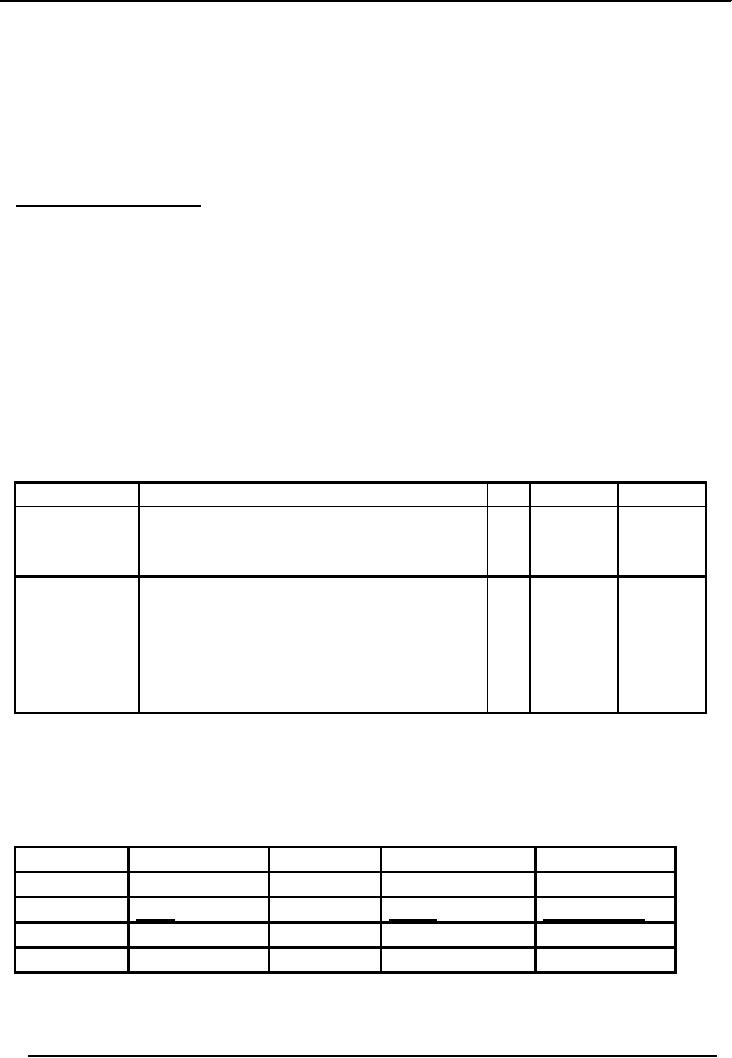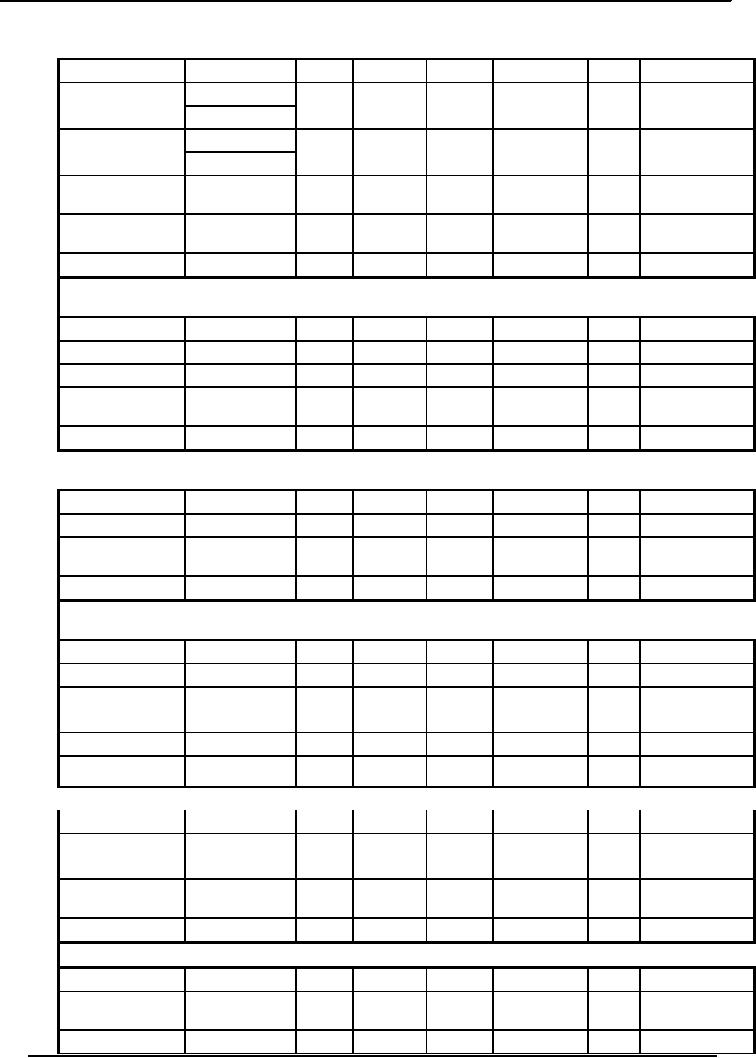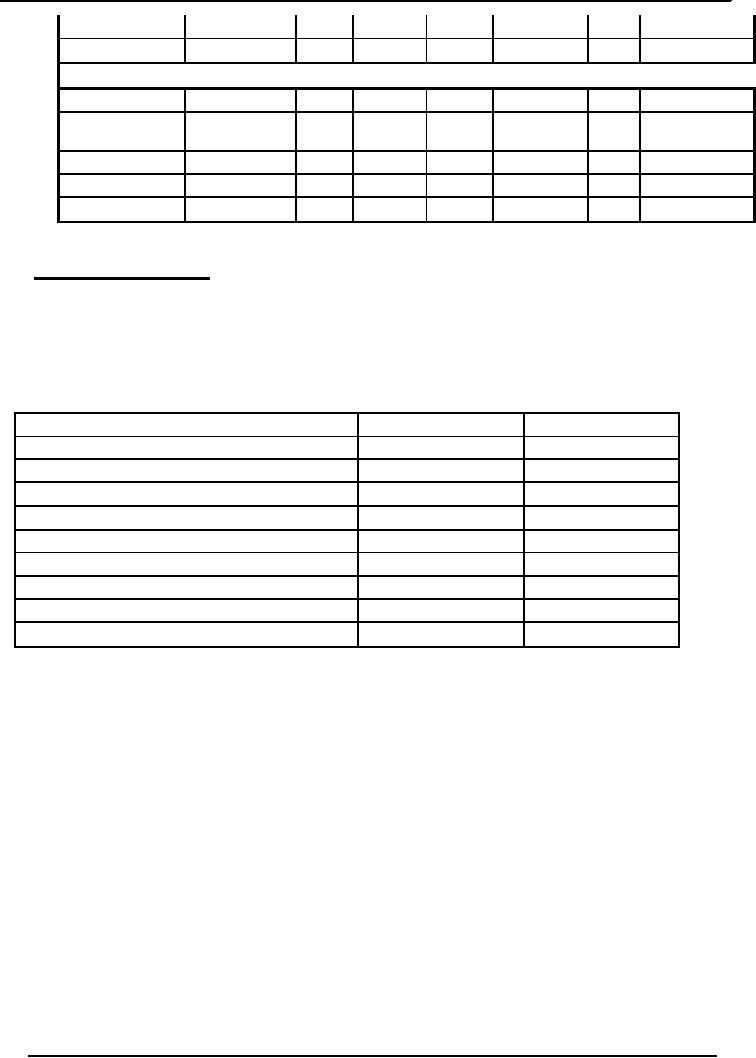 |
Steps in Accounting Cycle |
| << Rules of Debit and Credit |
| Preparing Balance Sheet from Trial Balance >> |

Financial
Statement Analysis-FIN621
VU
Lesson-4
ACCOUNTING
CYCLE/PROCESS
(Continued)
ACCOUNTING
CYCLE/PROCESS
It
mainly consists of Recording,
Classifying and Summarizing
financial transactions over an
accounting
period.
Steps
in Accounting Cycle
a)
Analyzing
financial transaction. The
purpose is to see which two
(or more) Accounts
(or
sub-Accounts) are affected by a
particular financial transaction.
b)
Recording
(chronologically)
in journal which is called
"book of original
entry".
this
step is also called
journalizing. Its practical
illustration is given
below.
c)
Posting
in
ledger which means
transferring debits and credits from
journal to
ledger
account. This is also called
ledgerising or classification.
d)
Preparing
trial balance,
this is done to prove the equality of
debits and credits in the
ledger
e)
Making
adjusting Entries
Compound
Entry. A
journal entry that has more
than one debit or credit
entry.
General
Journal
Date
Account
Title and explanation
LP
Dr.
Cr.
Cash
1
180,000
Khizr,
Capital
50
180,000
July,
2006 (1)
(Owner
invested cash in
business)
Building
36,000
Cash
15,000
July,
2006 (5)
Accounts
payable
21,000
(Purchase
building partly for cash
and
Partly
on credit)
"LP"
is reference account No: of the
particular ledger accounts.
For example cash account
has been
assigned
number 1 in ledger and capital account is
given number 50.
C)
Posting in
ledger which mean
transferring debits and credits from
journal to ledger account. This
is
also
called ledgerising or
classification
Date
Explanation
Ref
Dr.
Cr.
1-Jul
1
180,000
Khizr
1
Capital
Account
No:50
1-Jul
180,000
"Ref"
is reference to the page of journal i.e.
page 1. This shows that
there is cross-reference between
journal
and ledger through "LP" and
"ref" columns in journal and ledger
respectively.
14

Financial
Statement Analysis-FIN621
VU
Cash
Ledger Account
Date
Particulars
L/F
Debit
Date
Particulars
L/F
Credit
1stJuly
Owners
180,000
3rd
Land
141,000
July
Equity
Accounts
5th
July
20th
July
1,500
Building
15,000
Receivables
31st
Jul
A/P
3,000
31st
July
Balance
c/f
22,500
Total
181,500
Total
181,500
Building
Account
Date
Particulars
L/F
Debit
Date
Particulars
L/F
Credit
5th
July
Cash
Account
15,000
5th
July
A/P
21,000
31st
July
Balance
c/f
36,000
Total
36,000
Total
36,000
Office
Equipment Account
Date
Particulars
L/F
Debit
Date
Particulars
L/F
Credit
14-Jul
A/P
5,400
31st
July
Balance
c/f
5,400
Total
5,400
Total
5,400
Accounts
Payable
Date
Particulars
L/F
Debit
Date
Particulars
L/F
Credit
31st
July
Cash
3,000
5thJul
Building
21,000
14th
Equipment
5,400
July
31st
July
Balance
c/f
23,400
Total
26,400
Total
26,400
Land
Account
Date
Particulars
L/F
Debit
Date
Particulars
L/F
Credit
3rd
July
Cash
141,000
10th
A/R
11,000
July
31st
July
Balance
c/f
130,000
Total
141,000
Total
141,000
Accounts
Receivable
Date
Particulars
L/F
Debit
Date
Particulars
L/F
Credit
10th
July
Land
11,000
20th
Cash
1,500
July
31st
Balance
c/f
9,500
15

Financial
Statement Analysis-FIN621
VU
July
Total
11,000
Total
11,000
Owner's
Equity Account
Date
Particulars
L/F
Debit
Date
Particulars
L/F
Credit
1st
Cash
180,000
July
31st
July
Balance
c/f
180,000
Total
180,000
Total
180,000
d) Preparing
Trial balance:
This
is done to prove the equality of debits and credits in
the ledger.
KHIZR
PROPERTY DEALER
TRIAL
BALANCE
JULY
31, 2006
Dr.
Cr.
Rs.
Rs.
Cash
22,500
Accounts
Receivable
9,500
Land
130,000
Building
36,000
Office
Equipment
5,400
Accounts
Payable
23,400
Khizr
,capital (Owner's equity)
180,000
203,400
203,400
It is prepared in
the order of Accounting Equation
i.e. balance sheet. It
serves as a working paper
for
accountants.
It should however be noted
that it gives assurance only
as to equality of debit and
credit
amounts.
It does not assure accuracy.
For example if a transaction is
altogether omitted from
accounting
records,
debits and credits of other transactions so recorded
would be equal, but this
particular
transaction
which was omitted
altogether, would not be
detected by Trial balance.
�
At the end of
accounting period, a list of
all ledger balances is prepared.
This list is called
trial
Balance.
Trial
balance is a listing of the accounts in
your general ledger and their
balances as of a specified date.
A
trial balance is usually prepared at the
end of an accounting period and is
used to see if
additional
adjustments
are required to any of the
balances. Since the basic accounting
system relies on
double-
entry
bookkeeping, a trial balance
will have the same total
debit amount as it has total
credit amounts.
�
Both
sides of trial balance i.e.
Debit side and credit
side must be equal. If both
sides are not
equal,
there are some errors in the books of
accounts.
�
Trial
balance shows the mathematical accuracy
of the books of accounts.
16

Financial
Statement Analysis-FIN621
VU
Limitations
of Trial Balance
1.
Trial balance only shows the
mathematical accuracy of the
accounts.
2. If
both sides of trial balance
are equal, books of accounts
are considered to be correct. But
this
might
not be true in all the
cases.
3. If
any transaction is not recorded at all,
trial balance can not
detect the omitted transaction.
� If
any transaction is recorded in the wrong
head e.g. if an expense is debited to
an
assets
account. Trial balance will
not be able to detect that
mistake too
17
Table of Contents:
- ACCOUNTING & ACCOUNTING PRINCIPLES
- Dual Aspect of Transactions
- Rules of Debit and Credit
- Steps in Accounting Cycle
- Preparing Balance Sheet from Trial Balance
- Business transactions
- Adjusting Entry to record Expenses on Fixed Assets
- Preparing Financial Statements
- Closing entries in Accounting Cycle
- Income Statement
- Balance Sheet
- Cash Flow Statement
- Preparing Cash Flows
- Additional Information (AI)
- Cash flow from Operating Activities
- Operating Activities’ portion of cash flow statement
- Cash flow from financing Activities
- Notes to Financial Statements
- Charging Costs of Inventory to Income Statement
- First-in-First - out (FIFO), Last-in-First-Out (LIFO)
- Depreciation Accounting Policies
- Accelerated-Depreciation method
- Auditor’s Report, Opinion, Certificate
- Management Discussion & Analyses (MD&A)
- TYPES OF BUSINESS ORGANIZATIONS
- Incorporation of business
- Authorized Share Capital, Issued Share Capital
- Book Values of equity, share
- SUMMARY
- SUMMARY
- Analysis of income statement and balance sheet:
- COMMON –SIZE AND INDEX ANALYSIS
- ANALYSIS BY RATIOS
- ACTIVITY RATIOS
- Liquidity of Receivables
- LEVERAGE, DEBT RATIOS
- PROFITABILITY RATIOS
- Analysis by Preferred Stockholders
- Efficiency of operating cycle, process
- STOCKHOLDERS’ EQUITY SECTION OF THE BALANCE SHEET 1
- STOCKHOLDERS’ EQUITY SECTION OF THE BALANCE SHEET 2
- BALANCE SHEET AND INCOME STATEMENT RATIOS
- Financial Consultation Case Study
- ANALYSIS OF BALANCE SHEET & INCOME STATEMENT
- SUMMARY OF FINDGINS